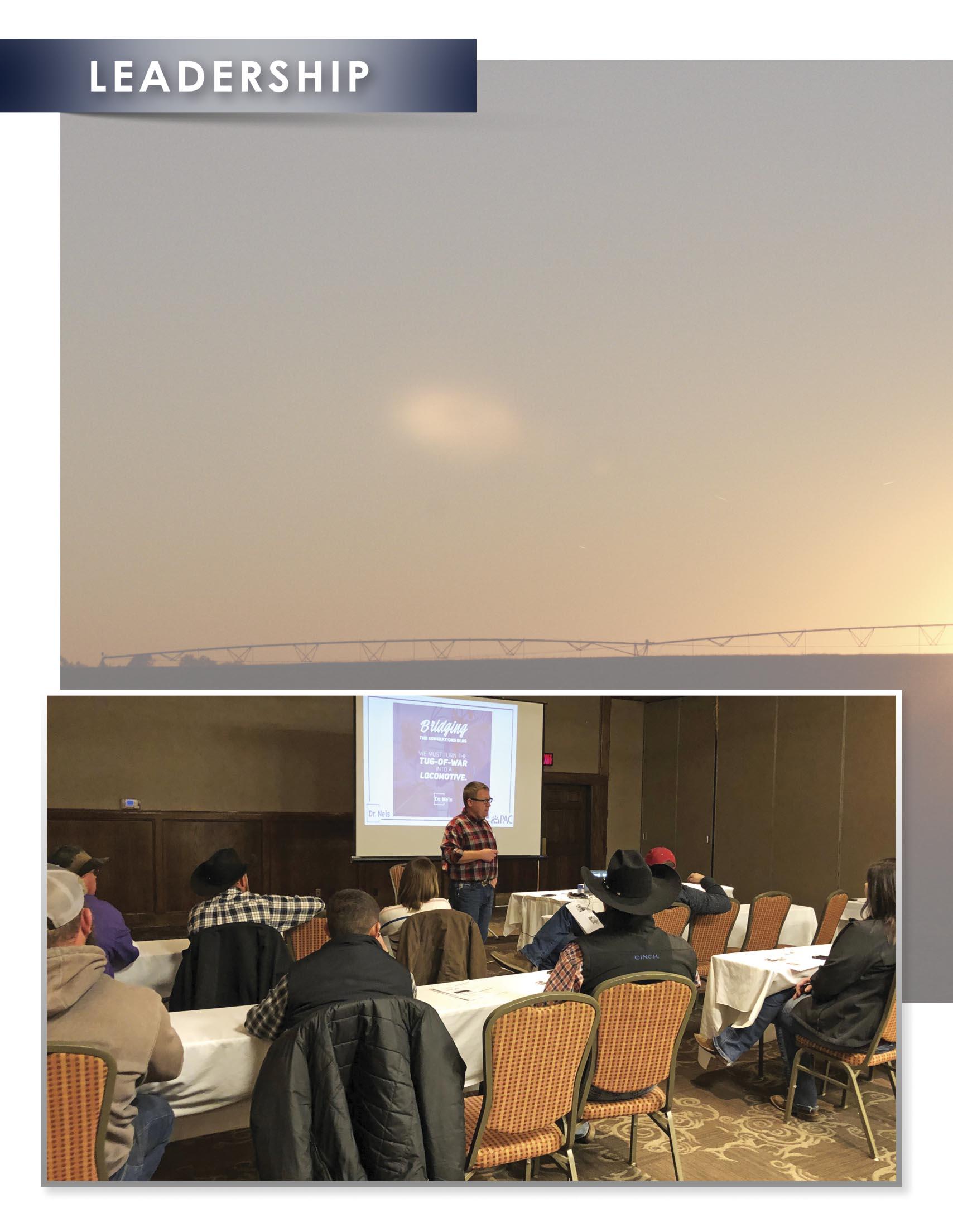
7 minute read
Reducing Employee Turnover Part 1 - Making Employees Feel Valued
By Pete Anderson, Ph.D., Midwest PMS, LLC
Employee turnover is frustrating and expensive. After investing the time, effort, and money to find and hire a good employee and watching them grow into their job, it really hurts to have them leave. Sometimes they just get a much better opportunity. In that case, say congratulations and wish them well. In other cases, they make a lateral move, to a similar job for similar pay. When that happens, look in the mirror. It may well be your fault.
The key to keeping good employees is having them engaged and committed, but how do we get there? Employee engagement starts with the interview and hiring process. Letting prospective hires know that you are hiring for the long term will attract those prospects who want to make a commitment. Follow that with a meaningful orientation, onboarding, and training period and provide the necessary resources to do their job properly. Set clear expectations, measure, and report, so that employees know how they are doing. All of those things are just good management but really achieving employee engagement requires even more.
Let’s start by understanding employee engagement and discuss a few things that you as a supervisor and leader can do.
Engaged employees have four things in common:
1. They feel valued as people.
2. They understand the value of the work that they do.
3. They feel good about the organization that they are part of.
4. They feel good about the industry that they are part of.

Let’s take a closer look at the first of these commonalities. They feel valued as people.
Employees trade their time, talent, and effort for money. That’s what a job is. But if your employees have only a transactional relationship with you and your company, they will always be open to leaving for a better transaction. As their leader, you need to show them that you value them as people, as employees, as team members.
If employees feel valued, their relationship will be one of belonging to something, not working for somebody. That is the first step to high employee engagement levels.
You need to accomplish that. You can’t delegate it to someone else. There are no shortcuts, and you can’t fake it. The only way to make them feel valued is to make it actually be true!
That means you. The single biggest factor in employee engagement is their relationship with their immediate supervisor. People do not quit jobs; they quit bosses. If an employee believes that you do not care whether they come to work tomorrow or somebody else is in their place, that employee is not long for your organization. Contrast that with being the type of leader that people say they would walk through walls for. You want to be that leader, but it takes hard work and a lot of emotional intelligence on your part.
Try to look at the world through the eyes of your employees. How did you greet them the first time you saw them today? Were you dismissive and in a hurry, or were you truly engaged when you said good morning? Did you wave when you drove by, or were you too busy? Do you occasionally ask about their life outside of work, and when you ask, do you really, sincerely care about the answers? All of these little interactions are opportunities to show respect for another human being and they are not really little at all. They are huge, especially in the eyes of a lower-ranking person with an employment situation that may seem a little fragile to them. Employees often feel powerless to affect their job environment. They may be fearful or intimidated by you as their supervisor or by the owner, general manager, CEO, or whoever ranks the highest. Showing that you see them and respect them, as a person, not just a set of hands, goes a long way.
And then there are the big interactions. How do you act when something goes wrong? How did you react the last time a piece of equipment broke down or something got damaged? Did you rant and rave and kick the door shut so you could yell at someone? Did you berate one employee in front of others? What about the last bad closeout or high death loss pen? How about that time you found feed or gas spilled? How did you act?
Ask yourself if your employees are likely to hide or cover up problems and mistakes. Or do they tell you about them and work to fix them? If they are covering up, that means they are afraid or intimidated and do not feel valued.
What can you do to ensure that your employees feel valued? Start by really valuing them! That seems obvious, but too many supervisors just do not value their people. Or if they do, they are not demonstrating that in ways that the employee notices. Stop and make eye contact when you talk to them. Really listen to what they say. Stay off your phone while you are talking to them and do not drop them in the middle of a conversation to react to something “more important”. Avoid negative non-verbal indicators like eye rolls or looking bored while someone speaks to you. Try to connect with every employee in your group every day, if only for a minute or two. If you have supervisors that report to you, make sure that they do the same.
Respect also means that you listen to their ideas and foster an environment where it is okay to ask you a question or say “I don’t know” as long as they have a desire to learn. That means you stop and explain things rather than just barking out orders. That means you engage employees in the small parts of management, like schedules, work flows, and ordering supplies, so that they are connected to the business. That means that when there are problems, you solve them right away. When there are people issues, you do not let them fester. That means that the rules are enforced fairly but also that they make sense and have a basis in reality.
Those things affect an employee’s emotional well-being. If you really value your employees, you will safeguard their physical well-being, too. Feedyards can be dangerous places to work and everyone needs to work constantly to make safety a priority. The wrong way to do that is a bunch of boring meetings and threats to punish someone if you catch them doing something in an unsafe manner. The right way is for the entire organization to adopt a culture that promotes safety. If your feedyard does not have a strong safety culture, it is not the worst employees who will leave, it is the best ones. They will find a place to work that takes their safety and well-being seriously.
That safety culture starts at the top. You need to organize and participate in safety meetings. You can’t skip or delegate because you have “more important” things to do. It sends a clear message if you are involved – and if you are not. And when you are involved, make sure that your team knows that safety is critical because you want them all to go home well tonight and come back in the morning. It is not just about lowering liability and insurance costs – you truly care about the people. Also, when you are involved, check your body language and non-verbal communication. Do not check your watch or phone, hurry through, or skip over parts of the agenda. Make sure that each employee knows that a safety meeting is the most important meeting of the day.
An employee’s relationship with their supervisor is critical but so is their relationship with their peers. You need to work to create the right kind of culture in their department or group. The employees must respect each other, and
Chuckles from Down Under
The company commander and his sergeant were in the field. As they hit the sack for the night, the sergeant said: "Sir, look up into the sky and tell me what you see."
The commander said, "I see millions of stars."
"And what does that tell you, sir?"
"Astronomically, it tells me there are millions of galaxies and potentially billions of planets. Theologically, it tells me that God is great and that we are small and insignificant. Meteorologically, it tells me that we will have a beautiful day tomorrow. What does it tell you, sergeant?"
"Well, sir, it tells me that somebody stole our tent!"
this is your responsibility too. As a leader, you are building teamwork every day. That does not mean a bunch of trust falls and team building exercises. Those are mostly big company time-wasters that do not do any real good. It also does not mean a lot of beer drinking with the fellas, although a little social interaction away from work can be helpful.
One of the most important things that managers do for team building is offer the occasional compliment to their team or team members. That means a sincere and specific compliment when someone deserves it, not just a drive-by “great job”.
True team building means that the people in your department or organization respect each other and care about each other. It also means they care about getting the work done right and hold each other to that standard. It is great if your team members want to work hard for you, but it is even better if they are working hard for each other. If they care about each other and about team results, they will set a standard and hold each other accountable in a way that exceeds anything you could do.
You drive this by who you bring into the organization and by what behavior you tolerate. You must model the behavior that you want your employees to display. You bring people into the organization that share the same values and live those values. People who care about their work and the people that they work with. People who show and earn mutual respect. You also drive this by eradicating gossip, back-biting, and employees criticizing each other or the company. These things are corrosive and must not be tolerated.
In the next issue, we will explore the other three commonalities shared by engaged employees: understanding the value of the work that they do, feeling good about the organization that they are part of, and feeling good about the industry that they are part of. Until then, start working on showing your people that you value them!












